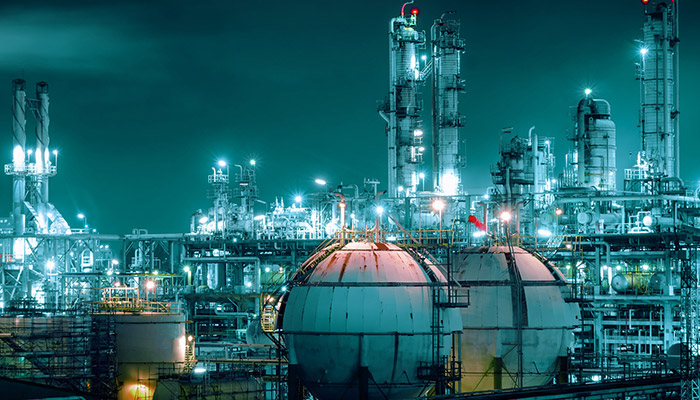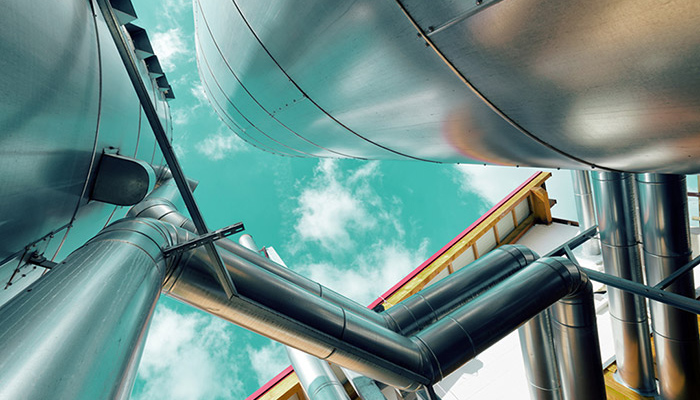November 10, 2025 • 5 min read
Small bets, big shifts: How U.S. refiners are quietly repositioning for the future
The U.S. refining industry is evolving – and at Worley, we’re seeing a shift that’s less about contraction and more about recalibration.
While total refining capacity is projected to fall slightly, from 18.4 million barrels per day in 2024 to 17.8 million by 2030, utilization remains high and margins strong. Gulf Coast refineries are running near 97 percent capacity, and nationwide utilization hovers around 90 percent.
This isn’t a story of decline. It’s one of adaptation. Refiners are making smaller, targeted investments – not because opportunity is disappearing, but because agility now matters more than scale.
Key takeaways
- Agility over scale. U.S. refiners are prioritizing smaller, flexible investments over large capital projects to stay responsive in a shifting market.
- Strong utilization despite capacity dip. While total refining capacity is slightly declining, utilization rates remain high, especially in Gulf Coast facilities, signaling operational strength.
- Feedstock flexibility is a strategic advantage. Refineries that can process varied feedstocks are outperforming, thanks to targeted upgrades in hydrotreating and coking.
- Smart partnerships matter. Refiners now seek partners who offer strategic insight, operational agility, and support for incremental transformation – not just large project delivery.
Why big projects are on hold
Despite healthy margins, the age of billion-dollar upgrades has paused. Investments in renewable diesel and sustainable aviation fuel (SAF) have slowed.
Instead, refiners are turning to smaller, tactical improvements: jet‑fuel treatment units, alkylation upgrades, heat-exchanger additions, and digital optimization.
These projects, typically between $25–50 million in scope, deliver measurable gains without locking in long‑term capital. They’re quick to implement, reversible, and scalable – ideal for a market where demand signals are mixed and policy direction remains uncertain.
At Worley Consulting, we’re helping refiners identify where those smaller bets can deliver the biggest returns – strengthening operations today while preserving flexibility for tomorrow.
Where small bets deliver big returns
Across the U.S. refiners are revamping existing assets rather than building new ones. We’re seeing several trends emerge:
- Improved molecular management to increase diesel recovery from conversion unit feeds
- Targeted jet fuel optimization, pulling jet from diesel and naphtha streams in refineries as gas-oil hydrocracking economics strengthen
- Selective waste heat utilization to capture energy and improve plant efficiency
- Expansion of alkylation capacity as propylene and other olefin markets remain volatile
- Evaluation of co‑processing bio-feeds and recycled plastics as part of early‑stage diversification.
These targeted moves reflect a practical approach with modest capital, short‑term paybacks and flexibility to adjust as the market evolves.

The demand story is more complex than it seems
Transportation fuel demand is no longer the sole driver of refinery economics. EV adoption in the U.S. passed 10 percent in 2025, but policy shifts have softened earlier mandates and SAF production still represents less than 2 percent of jet fuel consumption. The decline in gasoline and diesel demand is real, but the pace remains uneven across regions.
Meanwhile, industrial and petrochemical demand is quietly reshaping the landscape. IEA projects petrochemicals will account for one in every six barrels of oil consumed by 2030.
Crack spreads, ethylene margins, and propylene economics are all influencing new priorities.
Refiners that can pivot toward industrial feedstocks – supported by smart, flexible upgrades – are positioning not just to survive, but to grow.
Flexibility is the new competitive advantage
Feedstock flexibility has become a defining feature of top-performing refiners. Gulf Coast facilities configured for heavy crude continue to outperform, with many refineries leveraging discounted feedstocks like Western Canadian Select.
This capability doesn’t happen by accident. It depends on sustained investment in hydrotreating, coking, and other complex refining units.
In today’s uncertain environment, refiners are choosing optionality over scale – preferring multiple smaller upgrades that keep their options open.
We’re working with customers to design these incremental changes – projects that preserve flexibility, improve efficiency, and minimize risk without committing to large capital programs.

The next wave of transformation
The next shift in hydrocarbons won’t come from one breakthrough, it’ll come from many smaller ones happening at once. Our experts are seeing:
- CCR reforming of naphtha gaining momentum as a cost-effective way to produce hydrogen as fuel
- Conversion of fuel oil streams to petrochemical naphtha may see strong incentives driven by demand for lighter products
- Digitization, focused on proven efficiency gains rather than speculative technology spends
- Distributed execution models, moving engineering hours to global talent hubs centers such as Colombia and India
- Calculated investment in AI will be tied to demonstrable value rather than trend-driven experimentation.
Each of these trends reinforces a central truth, the future of refining is built on disciplined transformation, not disruption for its own sake.
Engineering partnerships are evolving for a new era
Five years ago, engineering partners were judged by how well they could deliver large capital projects on time and on budget.
Today, refiners also want a partner who understands portfolio optimization, operational agility, and the business context driving every investment decision.
That’s where Worley’s role has evolved. We’re supporting refiners through consulting engagements focused on optimizing existing assets – from jet-production strategies that spare distillate hydrotreater capacity, to capacity creep through process improvements. These efforts combine data‑driven insight with decades of domain expertise, helping customers do more with what’s already in place.

Our role in strategic transformation
We combine deep technical expertise with integrated delivery capabilities designed for the realities of today’s refining market. We help our customers:
- Unlock efficiency through digital tools, process modelling, and targeted plant upgrades
- Enhance feedstock flexibility with smart investments in hydrotreating and coking capacity
- Align product slates with emerging industrial and petrochemical demand
- De-risk capital decisions through scenario planning and market analysis
- Accelerate implementation using integrated delivery models that minimize disruption and maximize return.
We know refiners aren’t betting on a single future – they’re preparing for several. That requires a partner who can navigate complexity with clarity and confidence.
Resilience through smart investment
The refining sector is becoming leaner, more efficient, and more responsive to global demand. Capacity may be falling, but utilization remains high and exports strong.
The refiners who will thrive aren’t the ones making the biggest bets – they’re the ones making the smartest ones.
By combining data, technology, and disciplined capital allocation, refiners are proving that progress doesn’t always come from size – it comes from focus.
At Worley, we’re proud to help our customers deliver that focus – turning small bets into big shifts and building the foundation for a more sustainable future.





.jpg)